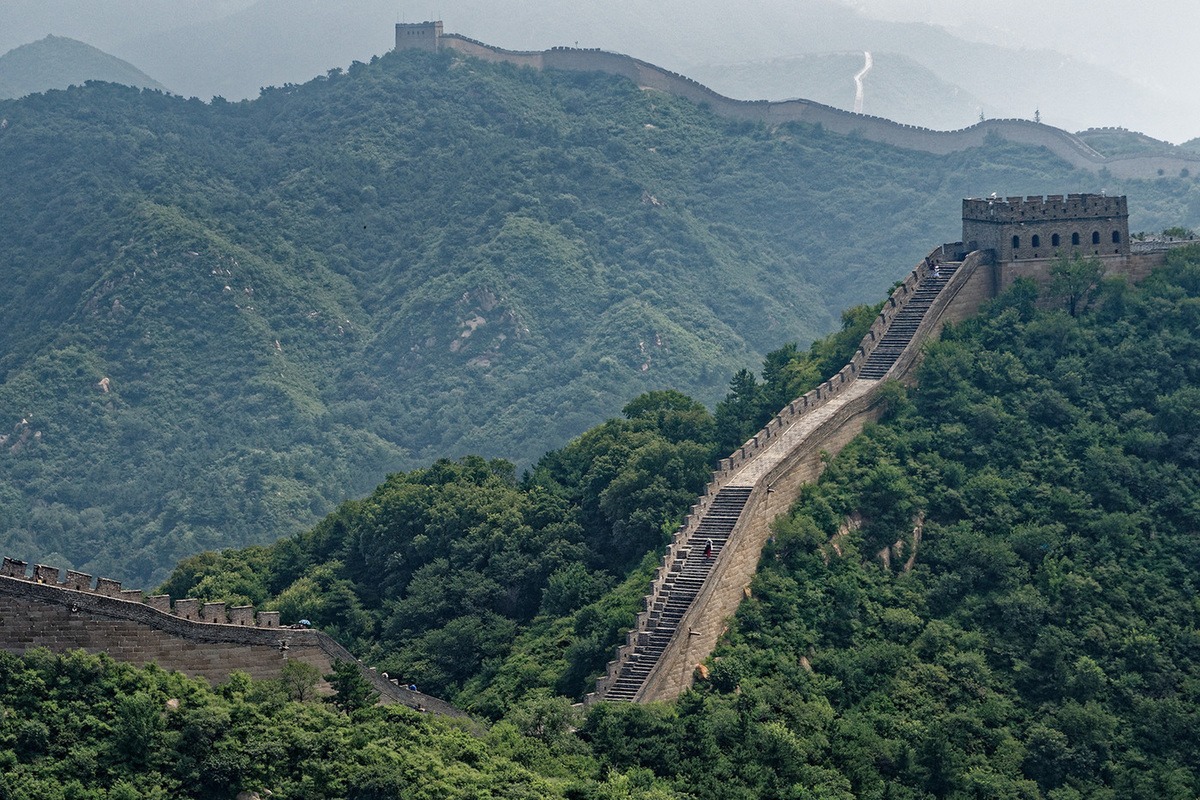Seven unexpected facts about the Great Wall of China revealed
[ad_1]

The Great Wall of China is one of the wonders of the world, whose history goes back more than 2 thousand years. It continues to attract the attention of tourists around the world, with approximately 10 million people visiting each year. In 2024, seven strange discoveries were named about the majestic structure, which became a symbol of the Celestial Empire.
It is common knowledge that the Great Wall of China is a military defense project comprising watchtowers, garrison posts and connecting walls. However, there are always a few strange discoveries that make one curious to visit this monument.
The plants on both sides of the Wall are genetically different
According to biology, living things can begin to exhibit different traits when separated by natural barriers such as mountains, hills or glaciers. The Great Wall of China is a man-made structure, but the plants on both sides have different genetic components. Scientists from Peking University have confirmed the genetic variation of plants along the Great Wall of China. They experimented with plants on a section of the Juyongguan Wall and compared them with plants separated by natural barriers, studying three groups of plants. To their amazement, they discovered that the wall, like the mountain, acts genetically, separating plants.
It could take a year to climb the Great Wall of China
Hiking has become popular among many tourists, and the Great Wall of China is one of the best places to visit. The total length is 21 thousand kilometers, so it is almost impossible to walk its entire length. Most people choose to walk the Ming Dynasty Great Wall of China, but this section alone stretches continuously for about 8 thousand kilometers. If you walked 32 kilometers every day, it would take approximately 9 months. This may take even longer depending on weather conditions. Despite the difficulties, several people successfully scaled the Great Wall of China, including Dong Yaohui, who scaled it in 508 days or 17 months.
Walls are not visible from space
Many believe that this colossal structure is visible from space. Unfortunately, this myth has been dispelled. The Chinese initially rejected the claim that the walls could not be seen from space because it came from Western authors. The Ministry of Education even published this statement in school textbooks. However, in 2003, the general Chinese public learned that this was true after the first Chinese astronaut, Yang Liwei, to go into space, confirmed that the wall was not visible from there.
The wall was built from rice
The Great Wall of China was built from stones, sand, bricks, compacted earth and several other materials, including rice. As incredible and strange as it may sound, it is true. Glutinous rice was used to make the mortar that held the bricks of the Great Wall of China together during the Ming Dynasty (1368–1644 AD). The solution was created by mixing glutinous rice flour with slaked lime. The ancient people of the Ming Dynasty knew about the glutinous properties of rice long before the advent of modern science. Many years later, chemists discovered that rice contains a unique type of polysaccharide known as amylopectin. Glutinous rice mortar remains the main bonding material in brick sections of walls to this day. This method was so effective that weeds were unable to grow between the walls, which often happens when using regular mortar.
The Wall may be the longest cemetery in the world
Human bones were not used to build walls like rice. However, according to some estimates, the sacrifices required to build it make the wall the longest cemetery in the world. Perhaps hundreds of thousands of workers died during construction and were buried at the base of the Wall. It is known that many of these workers were prisoners who were used to build the structure as punishment, as it was extremely life-threatening.
The wall extends to Mongolia
As the longest man-made structure in the world, the Great Wall of China extends beyond China into Mongolia. However, the Mongol portion of the wall was largely unknown for many years until a team of explorers led by William Lindsay discovered it in the Gobi Desert. Interestingly, some Mongols had no idea that the Wall was built among them, or thought that it had been destroyed. The Mongol part of the wall, known as the arc, even predates the main part of the walls built by the Ming Dynasty (1348–1644) by about 500 years. Unfortunately, the Mongolian Arc is one of the most dilapidated sections of the wall and receives the least attention, given that it is only 100 kilometers long.
Sections of the Wall may disappear within a few years
The Great Wall of China is a source of national pride for the Chinese people, as well as a testament to the strength and intelligence of the people. Unfortunately, the walls are not properly maintained. Over the years, about a third of the Great Wall of China has disappeared due to vandalism and natural destruction. Some early sections of the wall are now on the verge of collapse, and without immediate conservation efforts, entire fragments could disappear in as little as 30 years.
[ad_2]
Source link








